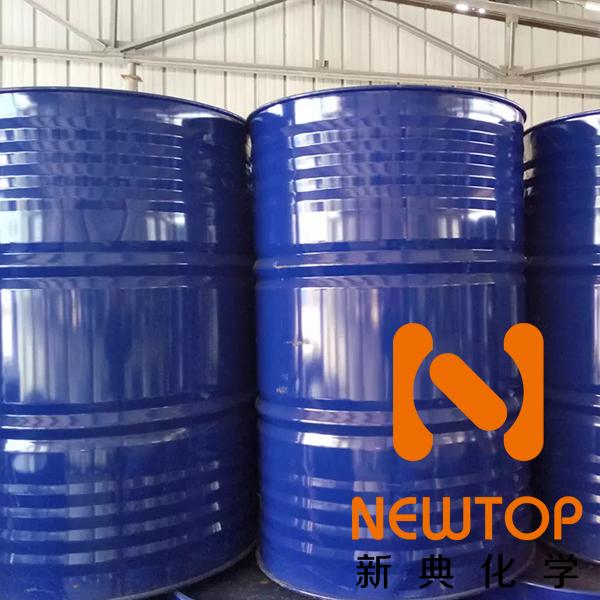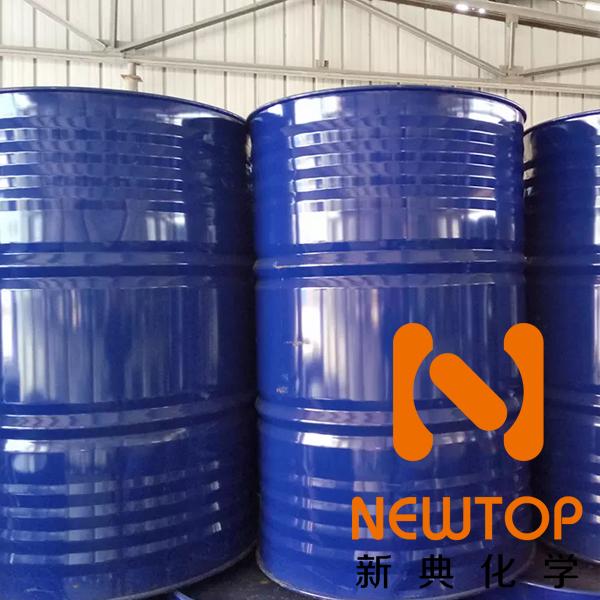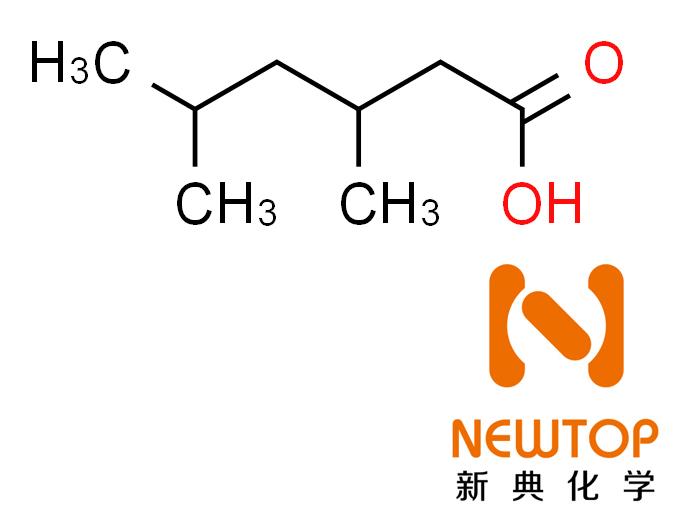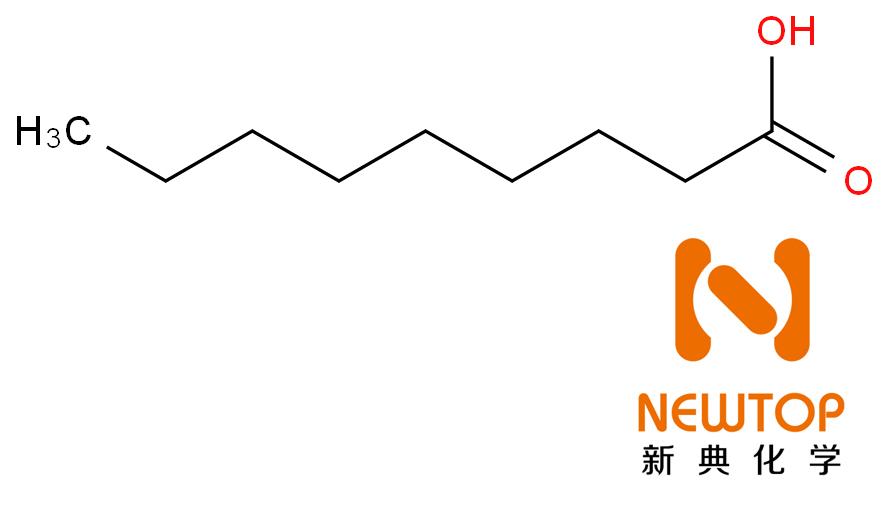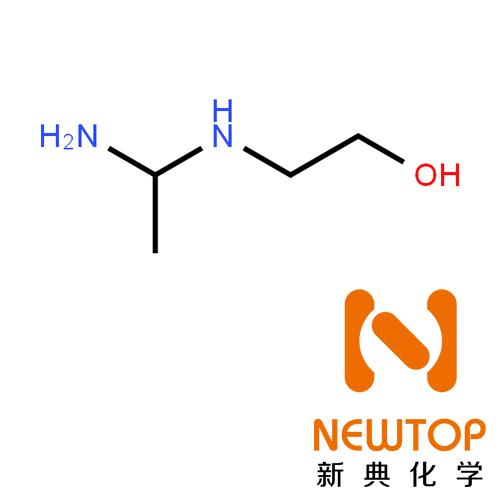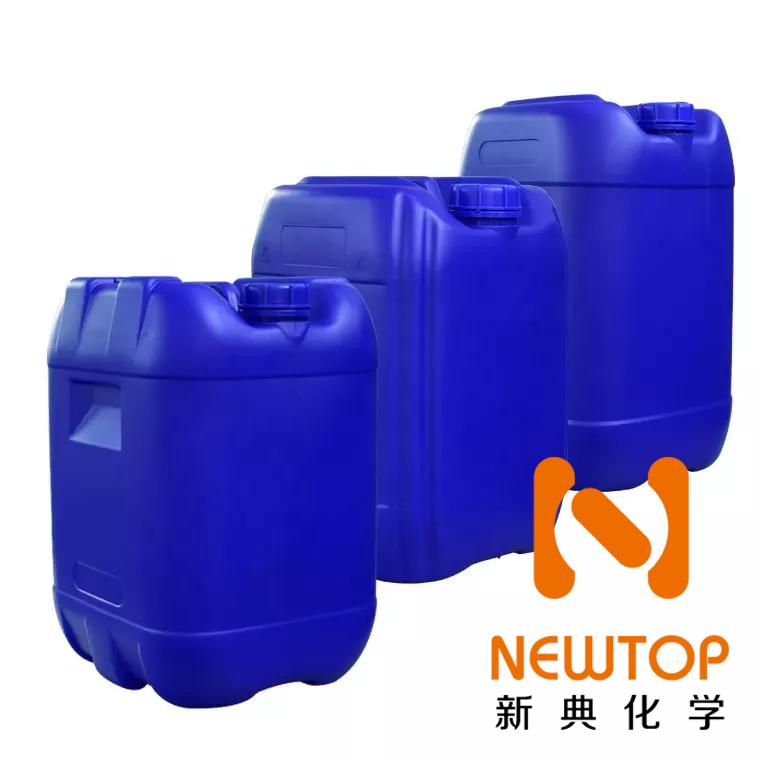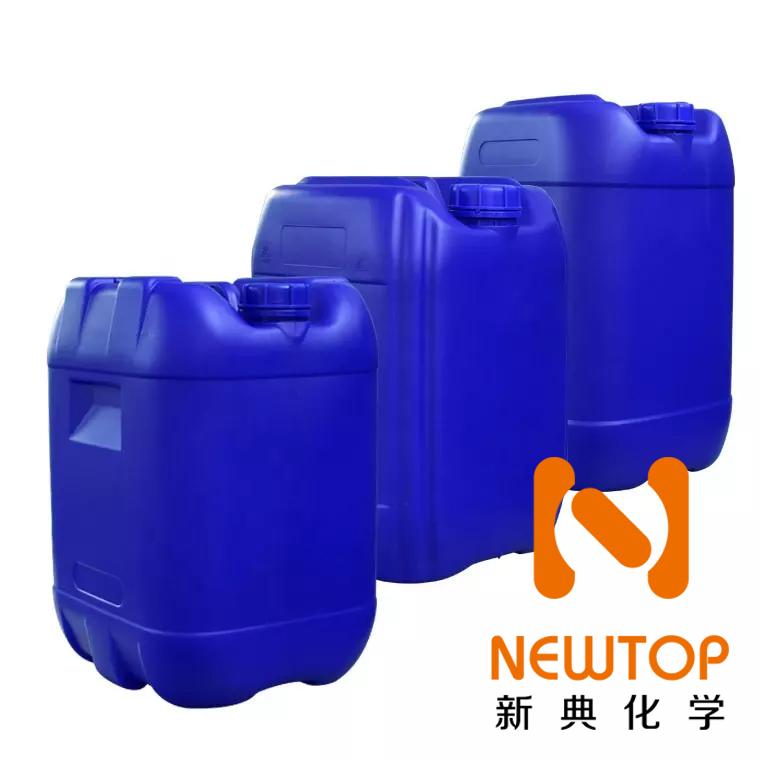Sponsored
- Female
- 31/08/1995
- Followed by 0 people
Recent Updates
- N,N-Diisopropylethylamine CAS7087-68-5Rm1104 ,No. 258, West SongXing Road, BaoShan District, Shanghai, China.OtherN,N-Diisopropylethylamine CAS7087-68-5
N,N-Diisopropylethylamine
N-Ethyldiisopropylamine,
3-METHYL-1-BUTINE-3-OL;
BIOTECHGRADESOLVENT,99.5%;
DIPEA,
Ethyldiisopropylamine,
Hünig’s base
CAS Number:7087-68-5
EC Number:230-392-0
MDL number:MFCD00008868
Appearance Colorless to Light yellow clear liquid
Purity(GC) min. 99.0 %
Quality Level 200
Assay ≥99%
form liquid
refractive index n20/D 1.414 (lit.)
Melting Point -45 °C
Boiling Point 127 °C
density 0.742 g/mL at 25 °C (lit.)
Specific Gravity 0.92
Molecular Formula / Molecular Weight C8H19N = 129.25
Flash point 12 °C
Refractive Index 1.41
Solubility in water Insoluble
Solubility (soluble in) Alcohol
Condition to Avoid Air Sensitive
CAS 7087-68-5
MDL Number MFCD00008868
Explosion limit 0.7 - 6.3 %(V)
pH value 12.3 (H₂O, 20 °C) (as an emulsion)
Viscosity kinematic 0.88 mm2/s (20 °C)
Vapor pressure 14 hPa (20 °C)
HS Code 2921 19 99
General description
N,N-Diisopropylethylamine, also known as Hünig′s base, is a sterically hindered amine. It is a non-nucleophilic base commonly employed for substitution reactions.It acts as an activator for chiral iridium N, P ligand complexes, which can be utilized in the hydrogenation of α, β-unsaturated nitriles. The influence of varying concentration of N,N-diisopropylethylamine on the synthesis of olvanil in the presence of lipase catalyst has been investigated.
Application
N,N-Diisopropylethylamine may be used in the synthesis of mannosylated ovalbumin peptides.
TBDPS protection of Alcohols using tert-Butylchlorodiphenylsilane.
BOM protection of Alcohols using Benzyloxymethyl Chloride.
Storage and transportation:
Should be sealed and stored in a dry, cool and ventilated warehouse
Package:
200KG/drum Storage: It is recommended to store in dry and cool area with proper ventilation. Please fasten the lid as soon as possible after original packing to prevent the mixing of other substances such as moisture from affecting the product performance. Do not inhale dust and avoid skin and mucous membrane contact. Smoking, eating and drinking are prohibited in the workplace. After work, shower and change clothes. Store contaminated clothes separately and wash them before use. Maintain good hygiene habits.
https://www.newtopchem.com/archives/43095
Email us: [email protected]
N,N-Diisopropylethylamine CAS7087-68-5 N,N-Diisopropylethylamine N-Ethyldiisopropylamine, 3-METHYL-1-BUTINE-3-OL; BIOTECHGRADESOLVENT,99.5%; DIPEA, Ethyldiisopropylamine, Hünig’s base CAS Number:7087-68-5 EC Number:230-392-0 MDL number:MFCD00008868 Appearance Colorless to Light yellow clear liquid Purity(GC) min. 99.0 % Quality Level 200 Assay ≥99% form liquid refractive index n20/D 1.414 (lit.) Melting Point -45 °C Boiling Point 127 °C density 0.742 g/mL at 25 °C (lit.) Specific Gravity 0.92 Molecular Formula / Molecular Weight C8H19N = 129.25 Flash point 12 °C Refractive Index 1.41 Solubility in water Insoluble Solubility (soluble in) Alcohol Condition to Avoid Air Sensitive CAS 7087-68-5 MDL Number MFCD00008868 Explosion limit 0.7 - 6.3 %(V) pH value 12.3 (H₂O, 20 °C) (as an emulsion) Viscosity kinematic 0.88 mm2/s (20 °C) Vapor pressure 14 hPa (20 °C) HS Code 2921 19 99 General description N,N-Diisopropylethylamine, also known as Hünig′s base, is a sterically hindered amine. It is a non-nucleophilic base commonly employed for substitution reactions.It acts as an activator for chiral iridium N, P ligand complexes, which can be utilized in the hydrogenation of α, β-unsaturated nitriles. The influence of varying concentration of N,N-diisopropylethylamine on the synthesis of olvanil in the presence of lipase catalyst has been investigated. Application N,N-Diisopropylethylamine may be used in the synthesis of mannosylated ovalbumin peptides. TBDPS protection of Alcohols using tert-Butylchlorodiphenylsilane. BOM protection of Alcohols using Benzyloxymethyl Chloride. Storage and transportation: Should be sealed and stored in a dry, cool and ventilated warehouse Package: 200KG/drum Storage: It is recommended to store in dry and cool area with proper ventilation. Please fasten the lid as soon as possible after original packing to prevent the mixing of other substances such as moisture from affecting the product performance. Do not inhale dust and avoid skin and mucous membrane contact. Smoking, eating and drinking are prohibited in the workplace. After work, shower and change clothes. Store contaminated clothes separately and wash them before use. Maintain good hygiene habits. https://www.newtopchem.com/archives/43095 Email us: [email protected]TypeNewPrice$10 (USD)StatusIn stock0 Comments 0 SharesPlease log in to like, share and comment! - 2-Isopropylphenol CAS88-69-7Rm1104 ,No. 258, West SongXing Road, BaoShan District, Shanghai, China.Other2-Isopropylphenol CAS88-69-7
2-Isopropylphenol
CAS:88-69-7
Molecular formula: C9H12O
EINECS号:201-852-8
prodox131
O-CUMENOL
O-ISOPROPYLPHENOL
ORTHO-ISO-PROPYLPHENOL
FEMA 3461
RTECS号:SL5900000
29071900
UN 3145
Hazard class 8
Packing Group II
ECHA EINECS - REACH Pre-Reg: 201-852-8
FDA UNII: B2899Z0Q2U
Beilstein Number: 1363322
MDL: MFCD00002224
CoE Number: 11234
XlogP3: 2.90 (est)
Molecular Weight: 136.19384000
Formula: C9 H12 O
Appearance: colorless to pale orange clear liquid (est)
Assay: 98.00 to 100.00
Food Chemicals Codex Listed: No
Specific Gravity: 0.98900 to 0.99900 @ 25.00 °C.
Pounds per Gallon - (est).: 8.229 to 8.313
Refractive Index: 1.52500 to 1.53000 @ 20.00 °C.
Melting Point: 14.00 to 16.00 °C. @ 760.00 mm Hg
Boiling Point: 212.00 to 214.00 °C. @ 760.00 mm Hg
Vapor Pressure: 0.112000 mmHg @ 25.00 °C. (est)
Flash Point: 192.00 °F. TCC ( 88.89 °C. )
Product Number I0173
Purity / Analysis Method >98.0%(GC)
Physical State (20 deg.C) Liquid
Store Under Inert Gas Store under inert gas
Condition to Avoid Air Sensitive
CAS RN 88-69-7
PubChem Substance ID 87571558
SDBS (AIST Spectral DB) 2344
Transport Information:
UN Number (DOT-AIR) UN3145
Class (DOT-AIR) 8
Packing Group (TCI-A) III
HS Number 2907.19.2000
Storage and transportation:
Should be sealed and stored in a dry, cool and ventilated warehouse
Package:
200KG/drum Storage: It is recommended to store in dry and cool area with proper ventilation. Please fasten the lid as soon as possible after original packing to prevent the mixing of other substances such as moisture from affecting the product performance. Do not inhale dust and avoid skin and mucous membrane contact. Smoking, eating and drinking are prohibited in the workplace. After work, shower and change clothes. Store contaminated clothes separately and wash them before use. Maintain good hygiene habits.
https://www.newtopchem.com/archives/43088
Email us: [email protected]2-Isopropylphenol CAS88-69-7 2-Isopropylphenol CAS:88-69-7 Molecular formula: C9H12O EINECS号:201-852-8 prodox131 O-CUMENOL O-ISOPROPYLPHENOL ORTHO-ISO-PROPYLPHENOL FEMA 3461 RTECS号:SL5900000 29071900 UN 3145 Hazard class 8 Packing Group II ECHA EINECS - REACH Pre-Reg: 201-852-8 FDA UNII: B2899Z0Q2U Beilstein Number: 1363322 MDL: MFCD00002224 CoE Number: 11234 XlogP3: 2.90 (est) Molecular Weight: 136.19384000 Formula: C9 H12 O Appearance: colorless to pale orange clear liquid (est) Assay: 98.00 to 100.00 Food Chemicals Codex Listed: No Specific Gravity: 0.98900 to 0.99900 @ 25.00 °C. Pounds per Gallon - (est).: 8.229 to 8.313 Refractive Index: 1.52500 to 1.53000 @ 20.00 °C. Melting Point: 14.00 to 16.00 °C. @ 760.00 mm Hg Boiling Point: 212.00 to 214.00 °C. @ 760.00 mm Hg Vapor Pressure: 0.112000 mmHg @ 25.00 °C. (est) Flash Point: 192.00 °F. TCC ( 88.89 °C. ) Product Number I0173 Purity / Analysis Method >98.0%(GC) Physical State (20 deg.C) Liquid Store Under Inert Gas Store under inert gas Condition to Avoid Air Sensitive CAS RN 88-69-7 PubChem Substance ID 87571558 SDBS (AIST Spectral DB) 2344 Transport Information: UN Number (DOT-AIR) UN3145 Class (DOT-AIR) 8 Packing Group (TCI-A) III HS Number 2907.19.2000 Storage and transportation: Should be sealed and stored in a dry, cool and ventilated warehouse Package: 200KG/drum Storage: It is recommended to store in dry and cool area with proper ventilation. Please fasten the lid as soon as possible after original packing to prevent the mixing of other substances such as moisture from affecting the product performance. Do not inhale dust and avoid skin and mucous membrane contact. Smoking, eating and drinking are prohibited in the workplace. After work, shower and change clothes. Store contaminated clothes separately and wash them before use. Maintain good hygiene habits. https://www.newtopchem.com/archives/43088 Email us: [email protected]TypeNewPrice$10 (USD)StatusIn stock0 Comments 0 Shares - 2-(1-methylpropyl)phenol CAS89-72-5 2-sec-buty phenolRm1104 ,No. 258, West SongXing Road, BaoShan District, Shanghai, China.Other2-(1-methylpropyl)phenol CAS89-72-5 2-sec-buty phenol
2-(1-methylpropyl)phenol
2-sec-buty phenol
O-S-BUTYLPHENOL;
ORTHO-SEC-BUTYLPHENOL;
OSBP
1-(1-Methylpropyl)phenol;
Phenol, o-sec-butyl-;
Phenol,2-(1-methylpropyl)
CAS No. 89-72-5
Molecular formula C10H14O
EINECS No. 201-933-8
Hazardous material transport number UN 3145
RTECS No. SJ8920000
Hazard class 8
Packing group III
Customs code 29071910
Product Number B0732
Purity / Analysis Method >97.0%(GC)
Molecular Formula / Molecular Weight C10H14O = 150.22
Physical State (20 deg.C) Liquid
Store Under Inert Gas Store under inert gas
Condition to Avoid Air Sensitive
CAS RN 89-72-5
Reaxys Registry Number 1210026
PubChem Substance ID 87563733
SDBS (AIST Spectral DB) 1789
MDL Number MFCD00002225
Specifications
Appearance White to Light yellow powder to crystal
Properties (reference)
Melting Point 14 °C
Boiling Point 228 °C
Flash point 102 °C
Specific Gravity (20/20) 0.98
Refractive Index 1.52
Solubility in water Insoluble
Solubility (soluble in) Alcohol, Ether
Transport Information:
UN Number (DOT-AIR) UN3145
Class (DOT-AIR) 8
Packing Group (TCI-A) III
HS Number 2907.19.2000
Storage and transportation:
Should be sealed and stored in a dry, cool and ventilated warehouse
Package:
200KG/drum Storage: It is recommended to store in dry and cool area with proper ventilation. Please fasten the lid as soon as possible after original packing to prevent the mixing of other substances such as moisture from affecting the product performance. Do not inhale dust and avoid skin and mucous membrane contact. Smoking, eating and drinking are prohibited in the workplace. After work, shower and change clothes. Store contaminated clothes separately and wash them before use. Maintain good hygiene habits.
https://www.newtopchem.com/archives/43085
Email us: [email protected]2-(1-methylpropyl)phenol CAS89-72-5 2-sec-buty phenol 2-(1-methylpropyl)phenol 2-sec-buty phenol O-S-BUTYLPHENOL; ORTHO-SEC-BUTYLPHENOL; OSBP 1-(1-Methylpropyl)phenol; Phenol, o-sec-butyl-; Phenol,2-(1-methylpropyl) CAS No. 89-72-5 Molecular formula C10H14O EINECS No. 201-933-8 Hazardous material transport number UN 3145 RTECS No. SJ8920000 Hazard class 8 Packing group III Customs code 29071910 Product Number B0732 Purity / Analysis Method >97.0%(GC) Molecular Formula / Molecular Weight C10H14O = 150.22 Physical State (20 deg.C) Liquid Store Under Inert Gas Store under inert gas Condition to Avoid Air Sensitive CAS RN 89-72-5 Reaxys Registry Number 1210026 PubChem Substance ID 87563733 SDBS (AIST Spectral DB) 1789 MDL Number MFCD00002225 Specifications Appearance White to Light yellow powder to crystal Properties (reference) Melting Point 14 °C Boiling Point 228 °C Flash point 102 °C Specific Gravity (20/20) 0.98 Refractive Index 1.52 Solubility in water Insoluble Solubility (soluble in) Alcohol, Ether Transport Information: UN Number (DOT-AIR) UN3145 Class (DOT-AIR) 8 Packing Group (TCI-A) III HS Number 2907.19.2000 Storage and transportation: Should be sealed and stored in a dry, cool and ventilated warehouse Package: 200KG/drum Storage: It is recommended to store in dry and cool area with proper ventilation. Please fasten the lid as soon as possible after original packing to prevent the mixing of other substances such as moisture from affecting the product performance. Do not inhale dust and avoid skin and mucous membrane contact. Smoking, eating and drinking are prohibited in the workplace. After work, shower and change clothes. Store contaminated clothes separately and wash them before use. Maintain good hygiene habits. https://www.newtopchem.com/archives/43085 Email us: [email protected]TypeNewPrice$10 (USD)StatusIn stock0 Comments 0 Shares - Methylcyclohexane CAS108-87-2Rm1104 ,No. 258, West SongXing Road, BaoShan District, Shanghai, China.OtherMethylcyclohexane CAS108-87-2
Cyclohxylmethane;
heptanaphthene;
methyl-cyclohexan;
methylecyclohexane;
Metylocykloheksan
RTECS No. GV6125000
Molecular Formula C7H14
CAS No. 108-87-2
EINECS No. 203-624-3
UN Dangerous Goods Code (UN No.): 2296
Shipping name: Methylcyclohexane
Hazardous classification :3
Packing Group II
Customs code 2902 19 00
grade anhydrous
Quality Level 100
vapor density 3.4 (vs air)
vapor pressure 37 mmHg ( 20 °C)
83.2 mmHg ( 37.7 °C)
Assay ≥99%
form liquid
autoignition temp. 545 °F
impurities <0.002% water
<0.005% water (100 mL pkg)
evapn. residue <0.0005%
refractive index n20/D 1.422 (lit.)
bp 101 °C (lit.)
mp −126 °C (lit.)
density 0.77 g/mL at 25 °C (lit.)
SMILES string CC1CCCCC1
InChI 1S/C7H14/c1-7-5-3-2-4-6-7/h7H,2-6H2,1H3
InChI key UAEPNZWRGJTJPN-UHFFFAOYSA-N
Application
Methylcyclohexane may be used as a solvent for the synthesis of unsolvated n-butylmagnesium chloride by the reaction of 1-chlorobutane with magnesium powder. It may also be used as the starting material to synthesize 1-methylcyclohexanecarboxylic acid.
Pharmaceutical intermediates. Methylcyclohexane is an important organic solvent and extractant, which can be used as a solvent for rubber, paint, varnish (some paint solvents also use methylcyclohexane), and can be used as oil extractant. Methylcyclohexane can be used in organic synthesis as solvent and analytical reagent. In addition, methylcyclohexane can also be used as a standard for thermometer calibration. The correction solution is usually made of methylcyclohexane as the main component.
Description
Catalogue Number 806147
Description Methylcyclohexane
Product Information
CAS number 108-87-2
EC index number 601-018-00-7
EC number 203-624-3
Hill Formula C₇H₁₄
Chemical formula C₆H₁₁CH₃
Molar Mass 98.19 g/mol
HS Code 2902 19 00
Structure formula Image
Quality Level MQ200
Physicochemical Information
Appearance Form:
liquid
Color: colorless
Explosion limit 1.1 - 6.7 %(V)
Flash point -4 °C
Ignition temperature 260 °C
Melting Point -126.6 °C
Solubility 0.014 g/l
Initial boiling point and boiling range 101 °C 214 °F - lit.
Upper/lower flammability or explosive limits Upper explosion limit: 6.7 %(V) Lower explosion limit: 1.1 %(V)
Toxicological Information
LD 50 dermal LD50 Rabbit > 86000 mg/kg
Safety Information according to GHS
Hazard Pictogram(s)
Hazard Statement(s) H225: Highly flammable liquid and vapour.
H304: May be fatal if swallowed and enters airways.
H315: Causes skin irritation.
H336: May cause drowsiness or dizziness.
H410: Very toxic to aquatic life with long lasting effects.
Precautionary Statement(s) P210: Keep away from heat, hot surfaces, sparks, open flames and other ignition sources. No smoking.
P233: Keep container tightly closed.
P273: Avoid release to the environment.
P301 + P310: IF SWALLOWED: Immediately call a POISON CENTER/doctor.
P303 + P361 + P353: IF ON SKIN (or hair): Take off immediately all contaminated clothing. Rinse skin with water.
P331: Do NOT induce vomiting.
P403 + P233: Store in a well-ventilated place. Keep container tightly closed.
Signal Word Danger
RTECS GV6125000
Storage class 3 Flammable liquids
WGK WGK 2 obviously hazardous to water
Safety Information
Categories of danger highly flammable, irritant, harmful, dangerous for the environment
Storage and Shipping Information
Storage Store below +30°C.
Transport Information
Declaration (railroad and road) ADR, RID UN 2296 , 3, II
Declaration (transport by air) IATA-DGR UN 2296 , 3, II
Declaration (transport by sea) IMDG-Code UN 2296 , 3, II
Specifications
Assay (GC, area%) ≥ 99 %
Density (d 20 °C/ 4 °C) 0.769 - 0.770
Identity (IR) passes test
Storage and transportation:
Should be sealed and stored in a dry, cool and ventilated warehouse
Package:
200KG/drum Storage: It is recommended to store in dry and cool area with proper ventilation. Please fasten the lid as soon as possible after original packing to prevent the mixing of other substances such as moisture from affecting the product performance. Do not inhale dust and avoid skin and mucous membrane contact. Smoking, eating and drinking are prohibited in the workplace. After work, shower and change clothes. Store contaminated clothes separately and wash them before use. Maintain good hygiene habits.
https://www.newtopchem.com/archives/43090
Email us: [email protected]Methylcyclohexane CAS108-87-2 Cyclohxylmethane; heptanaphthene; methyl-cyclohexan; methylecyclohexane; Metylocykloheksan RTECS No. GV6125000 Molecular Formula C7H14 CAS No. 108-87-2 EINECS No. 203-624-3 UN Dangerous Goods Code (UN No.): 2296 Shipping name: Methylcyclohexane Hazardous classification :3 Packing Group II Customs code 2902 19 00 grade anhydrous Quality Level 100 vapor density 3.4 (vs air) vapor pressure 37 mmHg ( 20 °C) 83.2 mmHg ( 37.7 °C) Assay ≥99% form liquid autoignition temp. 545 °F impurities <0.002% water <0.005% water (100 mL pkg) evapn. residue <0.0005% refractive index n20/D 1.422 (lit.) bp 101 °C (lit.) mp −126 °C (lit.) density 0.77 g/mL at 25 °C (lit.) SMILES string CC1CCCCC1 InChI 1S/C7H14/c1-7-5-3-2-4-6-7/h7H,2-6H2,1H3 InChI key UAEPNZWRGJTJPN-UHFFFAOYSA-N Application Methylcyclohexane may be used as a solvent for the synthesis of unsolvated n-butylmagnesium chloride by the reaction of 1-chlorobutane with magnesium powder. It may also be used as the starting material to synthesize 1-methylcyclohexanecarboxylic acid. Pharmaceutical intermediates. Methylcyclohexane is an important organic solvent and extractant, which can be used as a solvent for rubber, paint, varnish (some paint solvents also use methylcyclohexane), and can be used as oil extractant. Methylcyclohexane can be used in organic synthesis as solvent and analytical reagent. In addition, methylcyclohexane can also be used as a standard for thermometer calibration. The correction solution is usually made of methylcyclohexane as the main component. Description Catalogue Number 806147 Description Methylcyclohexane Product Information CAS number 108-87-2 EC index number 601-018-00-7 EC number 203-624-3 Hill Formula C₇H₁₄ Chemical formula C₆H₁₁CH₃ Molar Mass 98.19 g/mol HS Code 2902 19 00 Structure formula Image Quality Level MQ200 Physicochemical Information Appearance Form: liquid Color: colorless Explosion limit 1.1 - 6.7 %(V) Flash point -4 °C Ignition temperature 260 °C Melting Point -126.6 °C Solubility 0.014 g/l Initial boiling point and boiling range 101 °C 214 °F - lit. Upper/lower flammability or explosive limits Upper explosion limit: 6.7 %(V) Lower explosion limit: 1.1 %(V) Toxicological Information LD 50 dermal LD50 Rabbit > 86000 mg/kg Safety Information according to GHS Hazard Pictogram(s) Hazard Statement(s) H225: Highly flammable liquid and vapour. H304: May be fatal if swallowed and enters airways. H315: Causes skin irritation. H336: May cause drowsiness or dizziness. H410: Very toxic to aquatic life with long lasting effects. Precautionary Statement(s) P210: Keep away from heat, hot surfaces, sparks, open flames and other ignition sources. No smoking. P233: Keep container tightly closed. P273: Avoid release to the environment. P301 + P310: IF SWALLOWED: Immediately call a POISON CENTER/doctor. P303 + P361 + P353: IF ON SKIN (or hair): Take off immediately all contaminated clothing. Rinse skin with water. P331: Do NOT induce vomiting. P403 + P233: Store in a well-ventilated place. Keep container tightly closed. Signal Word Danger RTECS GV6125000 Storage class 3 Flammable liquids WGK WGK 2 obviously hazardous to water Safety Information Categories of danger highly flammable, irritant, harmful, dangerous for the environment Storage and Shipping Information Storage Store below +30°C. Transport Information Declaration (railroad and road) ADR, RID UN 2296 , 3, II Declaration (transport by air) IATA-DGR UN 2296 , 3, II Declaration (transport by sea) IMDG-Code UN 2296 , 3, II Specifications Assay (GC, area%) ≥ 99 % Density (d 20 °C/ 4 °C) 0.769 - 0.770 Identity (IR) passes test Storage and transportation: Should be sealed and stored in a dry, cool and ventilated warehouse Package: 200KG/drum Storage: It is recommended to store in dry and cool area with proper ventilation. Please fasten the lid as soon as possible after original packing to prevent the mixing of other substances such as moisture from affecting the product performance. Do not inhale dust and avoid skin and mucous membrane contact. Smoking, eating and drinking are prohibited in the workplace. After work, shower and change clothes. Store contaminated clothes separately and wash them before use. Maintain good hygiene habits. https://www.newtopchem.com/archives/43090 Email us: [email protected]TypeNewPrice$10 (USD)StatusIn stock0 Comments 0 Shares - Isooctanoic acid CAS25103-52-0Rm1104 ,No. 258, West SongXing Road, BaoShan District, Shanghai, China.Financial ServicesIsooctanoic acid CAS25103-52-0
Product Details
Chinese name:Isooctanoic acid English name:Isooctanoicacid
CAS:25103-52-0
Storage condition:Dry and sealed
Purity specification:99% Product category:Chemical raw materials
Isooctanoic acid is the main product of our company. Our company has been committed to providing high service, low monohybrid, high content products for the field of biochemical research, to provide service solutions for the majority of researchers engaged in research, is a large integrated supplier of biological raw materials, chemical raw materials research and development and production, welcome your inquiry and purchase.
Isooctanoic acid
Chinese name:2-ethylhexanoic acid
Synonyms:2-Ethylhexanoic acid;2-ethylhexanoic acid;secoctanoic acid,isooctanoic acid;2-ethylhexanoic acid;2-ethylhexanoic acid;German oxea isooctanoic acid;isooctanoic acid\;secoctanoic acid;German OXEA.
English name:Isooctanoicacid
English Synonyms:Isocaprylicacid;Isooctylacid;Isooctansure;I-OCTANOICACID;2-Ethylhexanoicacid;Isooctanoicacid;Isooctanoicacid/2- Ethylhexanoicacid;CecanoicC8acid
CAS No.:25103-52-0
Molecular formula:C8H16O2
Molecular weight:144.21
EINECS:246-617-0
Property:It is a colorless liquid
Content:99%
Packing:185kg plastic drum
Solubility: slightly soluble in cold water, soluble in hot water and ether, slightly soluble in ethanol.
Use:Used in organic synthesis industry.
https://www.newtopchem.com/archives/42950
Technical and business contact number:Manager Wu +86-183-0190-3156
Isooctanoic acid CAS25103-52-0 Product Details Chinese name:Isooctanoic acid English name:Isooctanoicacid CAS:25103-52-0 Storage condition:Dry and sealed Purity specification:99% Product category:Chemical raw materials Isooctanoic acid is the main product of our company. Our company has been committed to providing high service, low monohybrid, high content products for the field of biochemical research, to provide service solutions for the majority of researchers engaged in research, is a large integrated supplier of biological raw materials, chemical raw materials research and development and production, welcome your inquiry and purchase. Isooctanoic acid Chinese name:2-ethylhexanoic acid Synonyms:2-Ethylhexanoic acid;2-ethylhexanoic acid;secoctanoic acid,isooctanoic acid;2-ethylhexanoic acid;2-ethylhexanoic acid;German oxea isooctanoic acid;isooctanoic acid\;secoctanoic acid;German OXEA. English name:Isooctanoicacid English Synonyms:Isocaprylicacid;Isooctylacid;Isooctansure;I-OCTANOICACID;2-Ethylhexanoicacid;Isooctanoicacid;Isooctanoicacid/2- Ethylhexanoicacid;CecanoicC8acid CAS No.:25103-52-0 Molecular formula:C8H16O2 Molecular weight:144.21 EINECS:246-617-0 Property:It is a colorless liquid Content:99% Packing:185kg plastic drum Solubility: slightly soluble in cold water, soluble in hot water and ether, slightly soluble in ethanol. Use:Used in organic synthesis industry. https://www.newtopchem.com/archives/42950 Technical and business contact number:Manager Wu +86-183-0190-3156TypeNewPrice$10 (USD)StatusIn stock0 Comments 0 Shares - Octanedioic acid CAS 68937-75-7 Nonanoic acidRm1104 ,No. 258, West SongXing Road, BaoShan District, Shanghai, China.Financial ServicesOctanedioic acid CAS 68937-75-7 Nonanoic acid
Common name Octanedioic acid English name Nonanoic acid
CAS No. 68937-75-7
Molecular weight 158.23800
Density N/A Boiling point 254.5ºC
Molecular formula C9H18O2 Melting point 12.4ºC
MSDS US version
Flash point N/A
Synonyms: Caprylic acid (8-10 acid, C8C10 acid); 810 mixed acid; Caprylic acid C8-10; Caprylic acid C8-10,68937-75-7; Fatty acid C8C10 (caprylic acid); 810 acid; C8-10 acid; Caprylic acid
CAS:68937-75-7;
EINECS: 273-086-2
C810 acid: Caprylic-CapricAcidBlend; Caprylic/CapricAcid; Octanoic/DecanoicAcid
English Name:FattyAcidsC8C10;CAPRYLIC/CAPRICACID; Octanoic/DecanoicAcid/FattyAcidC8-C10
Molecular Formula:
C8H16O2+C10H20O2;
Properties:
Light amber to colourless clarified liquid with an oily odour.
Parameters:
Content >99.9%, Acid value/360, Saponification value/361, Iodine value/0.18, Fatty acid composition: C8 is 59.5, C10 is 40.1.
Name of octanedecanoic acid
Chinese name Octanedioic acid
English name Nonanoic acid
Physical and chemical properties of octanedecanoic acid
Boiling point 254.5ºC
Melting point 12.4ºC
Molecular formula C9H18O2
Molecular weight 158.23800
Precise mass 158.13100
PSA 37.30000
LogP 2.82160
Octanedioic Acid Safety Information
Customs code 2942000000
Octanedioic acid Customs
Customs Code 2942000000
Fatty acids are a class of carboxylic acid compounds consisting of hydrocarbon groups linked to carboxylic acids. They are widely used as raw materials in various industries and as intermediate products in the chemical synthesis of antibacterial pesticides and other products.
It is used as a raw material for plasticizers, stabilizers and flame retardants in the plastics industry; lubricants, rust inhibitors and hydraulic fluids in the petroleum and metalworking industries; surfactants for textile coatings and mineral processing; the production of alkyl chlorides of agricultural products, methyl octanoate; and synthetic triglycerides of caprylicacid, pentaerythritol esters and polyol esters as metal lubricants, lubricants and emollients for personal care products.
https://www.newtopchem.com/archives/42953
Technical and business contact number: Manager Wu +86-183-0190-3156
Octanedioic acid CAS 68937-75-7 Nonanoic acid Common name Octanedioic acid English name Nonanoic acid CAS No. 68937-75-7 Molecular weight 158.23800 Density N/A Boiling point 254.5ºC Molecular formula C9H18O2 Melting point 12.4ºC MSDS US version Flash point N/A Synonyms: Caprylic acid (8-10 acid, C8C10 acid); 810 mixed acid; Caprylic acid C8-10; Caprylic acid C8-10,68937-75-7; Fatty acid C8C10 (caprylic acid); 810 acid; C8-10 acid; Caprylic acid CAS:68937-75-7; EINECS: 273-086-2 C810 acid: Caprylic-CapricAcidBlend; Caprylic/CapricAcid; Octanoic/DecanoicAcid English Name:FattyAcidsC8C10;CAPRYLIC/CAPRICACID; Octanoic/DecanoicAcid/FattyAcidC8-C10 Molecular Formula: C8H16O2+C10H20O2; Properties: Light amber to colourless clarified liquid with an oily odour. Parameters: Content >99.9%, Acid value/360, Saponification value/361, Iodine value/0.18, Fatty acid composition: C8 is 59.5, C10 is 40.1. Name of octanedecanoic acid Chinese name Octanedioic acid English name Nonanoic acid Physical and chemical properties of octanedecanoic acid Boiling point 254.5ºC Melting point 12.4ºC Molecular formula C9H18O2 Molecular weight 158.23800 Precise mass 158.13100 PSA 37.30000 LogP 2.82160 Octanedioic Acid Safety Information Customs code 2942000000 Octanedioic acid Customs Customs Code 2942000000 Fatty acids are a class of carboxylic acid compounds consisting of hydrocarbon groups linked to carboxylic acids. They are widely used as raw materials in various industries and as intermediate products in the chemical synthesis of antibacterial pesticides and other products. It is used as a raw material for plasticizers, stabilizers and flame retardants in the plastics industry; lubricants, rust inhibitors and hydraulic fluids in the petroleum and metalworking industries; surfactants for textile coatings and mineral processing; the production of alkyl chlorides of agricultural products, methyl octanoate; and synthetic triglycerides of caprylicacid, pentaerythritol esters and polyol esters as metal lubricants, lubricants and emollients for personal care products. https://www.newtopchem.com/archives/42953 Technical and business contact number: Manager Wu +86-183-0190-3156TypeNewPrice$10 (USD)StatusIn stock0 Comments 0 Shares - AEEA 2-(2-aminoethylamino)ethanol CAS111-41-1Rm1104 ,No. 258, West SongXing Road, BaoShan District, Shanghai, China.Financial ServicesAEEA 2-(2-aminoethylamino)ethanol CAS111-41-1
AMINOETHYLETHANOLAMINE (AEEA)
CAS: 111-41-1
Overview:
IUPAC name: 2-(2-aminoethylamino)ethanol
Other Chimical Names: 2-(2-AMINOETHYLAMINO)ETHANOL;AMINOETHYLETHANOLAMIN;AMINOETHYLETHANOLAMINE;AMINOETHYETHANOLAMINE;AEEA;HYDROXYETHYL-ETHYLENEDIAMINE;LABOTEST-BB LTBB000455;N-HYDROXYETHYL-1,2-ETHANEDIAMINE
MF: C4H12N2O
MW: 104.15
CAS: 111-41-1
Physical and Chemical Properties:
Physical state (25°C): viscous liquid
Colour: Colorless
Boiling point/range: 243°C/1013hPa
Flash Point: 132℃/1013hPa
Viscosity: 141mPa.s@20℃
Relative density: 1.026g/cm3@25℃
Solubility(ies): Water Soluble
Features and uses:
AMINOETHYLETHANOLAMINE (AEEA) CAS: 111-41-1 contains primary and secondary amines
Linear molecular structure of groups. AEEA is a colorless liquid, have higher viscosity than ethylenediamine
(EDA) and diethylenetriamine (DETA) . AMINOETHYLETHANOLAMINE (AEEA) has unique properties and is commonly used in the production of detergents, fabric softeners
Chemical intermediates for agents, chelating agents, fuel additives and coatings.
Storage Information:
Store in a cool and ventilated warehouse. Keep away from fire and heat source. Keep out of direct sunlight. Keep the container sealed. It should be stored separately from oxidants and edible chemicals, and avoid mixed storage. Fire fighting equipment of corresponding variety and quantity shall be provided. The storage area shall be equipped with leakage emergency treatment equipment and suitable storage materials.
Package:
200KG/Plastic Bucket
https://www.newtopchem.com/archives/39156AEEA 2-(2-aminoethylamino)ethanol CAS111-41-1 AMINOETHYLETHANOLAMINE (AEEA) CAS: 111-41-1 Overview: IUPAC name: 2-(2-aminoethylamino)ethanol Other Chimical Names: 2-(2-AMINOETHYLAMINO)ETHANOL;AMINOETHYLETHANOLAMIN;AMINOETHYLETHANOLAMINE;AMINOETHYETHANOLAMINE;AEEA;HYDROXYETHYL-ETHYLENEDIAMINE;LABOTEST-BB LTBB000455;N-HYDROXYETHYL-1,2-ETHANEDIAMINE MF: C4H12N2O MW: 104.15 CAS: 111-41-1 Physical and Chemical Properties: Physical state (25°C): viscous liquid Colour: Colorless Boiling point/range: 243°C/1013hPa Flash Point: 132℃/1013hPa Viscosity: 141mPa.s@20℃ Relative density: 1.026g/cm3@25℃ Solubility(ies): Water Soluble Features and uses: AMINOETHYLETHANOLAMINE (AEEA) CAS: 111-41-1 contains primary and secondary amines Linear molecular structure of groups. AEEA is a colorless liquid, have higher viscosity than ethylenediamine (EDA) and diethylenetriamine (DETA) . AMINOETHYLETHANOLAMINE (AEEA) has unique properties and is commonly used in the production of detergents, fabric softeners Chemical intermediates for agents, chelating agents, fuel additives and coatings. Storage Information: Store in a cool and ventilated warehouse. Keep away from fire and heat source. Keep out of direct sunlight. Keep the container sealed. It should be stored separately from oxidants and edible chemicals, and avoid mixed storage. Fire fighting equipment of corresponding variety and quantity shall be provided. The storage area shall be equipped with leakage emergency treatment equipment and suitable storage materials. Package: 200KG/Plastic Bucket https://www.newtopchem.com/archives/39156TypeNewPrice$10 (USD)StatusIn stock0 Comments 0 Shares - NT CAT T CAS:2212-32-0 Analysis and PrecautionsRm1104 ,No. 258, West SongXing Road, BaoShan District, Shanghai, China.Financial ServicesNT CAT T CAS:2212-32-0 Analysis and Precautions
Introduction.
CAS No.:2212-32-0
Molecular Formula: (CH3)2NCH2CH2N(CH3)CH2CH2OH
Molecular weight: 146.23
Chinese name: 2-{[2-(dimethylamino)ethyl]methylamino}ethanol
English name: 2-{[2-(Dimethylamino)ethyl]methylamino}ethanol
English alias: 2-{[2-(Dimethylamino)ethyl]methylamino}ethanol
Precise molecular weight/precise mass: 146.23
Molecular structure.
1、 Molar refractive index: 43.45
2. Molar volume (m3/mol): 156.0
3、 Isotropic specific volume (90.2K): 378.7
4、 Surface tension (dyne/cm): 34.6
5、 Dielectric constant (F/m): not available
6、 Dipole distance (D): not available
7、 Polarization rate (10 -24cm 3): 17.22
Oil-water partition coefficient / LogP.
LogP value refers to the logarithmic value of the partition coefficient of a substance in the n-octanol/water two-phase system, reflecting the partition of the substance in the oil-water two-phase. The larger the LogP value, the more lipophilic the substance is; conversely, the smaller the LogP value, the more hydrophilic the substance is.
Product use.
Trimethylhydroxyethyl ethylenediamine is a low odor reactive foaming catalyst.
Trimethylhydroxyethyl ethylene diamine is mainly used as a catalyst for polyether-based polyurethane flexible foam, molded foam, semi-rigid foam and rigid foam, and is especially recommended for automotive foam.
Applications.
2-{[2-(dimethylamino)ethyl]methylamino}ethanol (dmemH) has been used for the preparation of new iron clusters:
[Fe7O4 (O2CPh) 11 (dmem) 2]
[Fe7O4 (O2CMe) 11 (dmem) 2]
[Fe6O2 (OH) 4 (O2CBut) 8 (dmem) 2]
Conditions to be avoided.
Heat, flame and sparks.
Incompatible substances.
Strong oxidizing agent, strong acid
Waste disposal methods:
This explosive product can be burned in a chemical incinerator with post-combustion treatment and scrubbing action
Dispose of the remaining and non-recyclable solution to a licensed company.
Contact a licensed professional waste disposal facility to dispose of the substance.
Contaminated containers and packaging
Dispose of as unused product.
Safety Information.
Hazardous Transport Code: Not available
Hazardous Material Marking: Irritant
Safety Marking: S26
Hazardous Marking: R36/37/38
Description of necessary first aid measures.
Consult a physician for general advice. Show this safety technical note to the physician who arrives at the scene.
Inhalation
If inhaled, move patient to fresh air. If breathing stops, perform artificial respiration. Consult a physician.
Skin contact
Flush with soap and plenty of water. Consult a physician.
Eye contact
Flush thoroughly with plenty of water for at least 15 minutes and consult a physician.
Ingestion
Do not induce vomiting. Do not give anything by mouth to an unconscious person. Rinse mouth with water. Consult a physician.
Storage and transportation.
Should be kept sealed and stored in a dry, cool and ventilated warehouse
Packaging.
200KG/drum Storage: It is recommended to store in a dry and cool area with proper ventilation. Please fasten the lid of the package as soon as possible after the original packaging to prevent the mixing of other substances such as moisture from affecting the performance of the product. Do not inhale dust and avoid skin and mucous membrane contact. Smoking, eating and drinking are prohibited in the workplace. After work, shower and change clothes. Store contaminated clothes separately and wash them before use. Maintain good hygiene habits.
https://www.newtopchem.com/archives/40573NT CAT T CAS:2212-32-0 Analysis and Precautions Introduction. CAS No.:2212-32-0 Molecular Formula: (CH3)2NCH2CH2N(CH3)CH2CH2OH Molecular weight: 146.23 Chinese name: 2-{[2-(dimethylamino)ethyl]methylamino}ethanol English name: 2-{[2-(Dimethylamino)ethyl]methylamino}ethanol English alias: 2-{[2-(Dimethylamino)ethyl]methylamino}ethanol Precise molecular weight/precise mass: 146.23 Molecular structure. 1、 Molar refractive index: 43.45 2. Molar volume (m3/mol): 156.0 3、 Isotropic specific volume (90.2K): 378.7 4、 Surface tension (dyne/cm): 34.6 5、 Dielectric constant (F/m): not available 6、 Dipole distance (D): not available 7、 Polarization rate (10 -24cm 3): 17.22 Oil-water partition coefficient / LogP. LogP value refers to the logarithmic value of the partition coefficient of a substance in the n-octanol/water two-phase system, reflecting the partition of the substance in the oil-water two-phase. The larger the LogP value, the more lipophilic the substance is; conversely, the smaller the LogP value, the more hydrophilic the substance is. Product use. Trimethylhydroxyethyl ethylenediamine is a low odor reactive foaming catalyst. Trimethylhydroxyethyl ethylene diamine is mainly used as a catalyst for polyether-based polyurethane flexible foam, molded foam, semi-rigid foam and rigid foam, and is especially recommended for automotive foam. Applications. 2-{[2-(dimethylamino)ethyl]methylamino}ethanol (dmemH) has been used for the preparation of new iron clusters: [Fe7O4 (O2CPh) 11 (dmem) 2] [Fe7O4 (O2CMe) 11 (dmem) 2] [Fe6O2 (OH) 4 (O2CBut) 8 (dmem) 2] Conditions to be avoided. Heat, flame and sparks. Incompatible substances. Strong oxidizing agent, strong acid Waste disposal methods: This explosive product can be burned in a chemical incinerator with post-combustion treatment and scrubbing action Dispose of the remaining and non-recyclable solution to a licensed company. Contact a licensed professional waste disposal facility to dispose of the substance. Contaminated containers and packaging Dispose of as unused product. Safety Information. Hazardous Transport Code: Not available Hazardous Material Marking: Irritant Safety Marking: S26 Hazardous Marking: R36/37/38 Description of necessary first aid measures. Consult a physician for general advice. Show this safety technical note to the physician who arrives at the scene. Inhalation If inhaled, move patient to fresh air. If breathing stops, perform artificial respiration. Consult a physician. Skin contact Flush with soap and plenty of water. Consult a physician. Eye contact Flush thoroughly with plenty of water for at least 15 minutes and consult a physician. Ingestion Do not induce vomiting. Do not give anything by mouth to an unconscious person. Rinse mouth with water. Consult a physician. Storage and transportation. Should be kept sealed and stored in a dry, cool and ventilated warehouse Packaging. 200KG/drum Storage: It is recommended to store in a dry and cool area with proper ventilation. Please fasten the lid of the package as soon as possible after the original packaging to prevent the mixing of other substances such as moisture from affecting the performance of the product. Do not inhale dust and avoid skin and mucous membrane contact. Smoking, eating and drinking are prohibited in the workplace. After work, shower and change clothes. Store contaminated clothes separately and wash them before use. Maintain good hygiene habits. https://www.newtopchem.com/archives/40573TypeNewPrice$10 (USD)StatusIn stock0 Comments 0 Shares - NT CAT T CAS:2212-32-0 Analysis and PrecautionsRm1104 ,No. 258, West SongXing Road, BaoShan District, Shanghai, China.Financial ServicesNT CAT T CAS:2212-32-0 Analysis and Precautions
Introduction.
CAS No.:2212-32-0
Molecular Formula: (CH3)2NCH2CH2N(CH3)CH2CH2OH
Molecular weight: 146.23
Chinese name: 2-{[2-(dimethylamino)ethyl]methylamino}ethanol
English name: 2-{[2-(Dimethylamino)ethyl]methylamino}ethanol
English alias: 2-{[2-(Dimethylamino)ethyl]methylamino}ethanol
Precise molecular weight/precise mass: 146.23
Molecular structure.
1、 Molar refractive index: 43.45
2. Molar volume (m3/mol): 156.0
3、 Isotropic specific volume (90.2K): 378.7
4、 Surface tension (dyne/cm): 34.6
5、 Dielectric constant (F/m): not available
6、 Dipole distance (D): not available
7、 Polarization rate (10 -24cm 3): 17.22
Oil-water partition coefficient / LogP.
LogP value refers to the logarithmic value of the partition coefficient of a substance in the n-octanol/water two-phase system, reflecting the partition of the substance in the oil-water two-phase. The larger the LogP value, the more lipophilic the substance is; conversely, the smaller the LogP value, the more hydrophilic the substance is.
Product use.
Trimethylhydroxyethyl ethylenediamine is a low odor reactive foaming catalyst.
Trimethylhydroxyethyl ethylene diamine is mainly used as a catalyst for polyether-based polyurethane flexible foam, molded foam, semi-rigid foam and rigid foam, and is especially recommended for automotive foam.
Applications.
2-{[2-(dimethylamino)ethyl]methylamino}ethanol (dmemH) has been used for the preparation of new iron clusters:
[Fe7O4 (O2CPh) 11 (dmem) 2]
[Fe7O4 (O2CMe) 11 (dmem) 2]
[Fe6O2 (OH) 4 (O2CBut) 8 (dmem) 2]
Conditions to be avoided.
Heat, flame and sparks.
Incompatible substances.
Strong oxidizing agent, strong acid
Waste disposal methods:
This explosive product can be burned in a chemical incinerator with post-combustion treatment and scrubbing action
Dispose of the remaining and non-recyclable solution to a licensed company.
Contact a licensed professional waste disposal facility to dispose of the substance.
Contaminated containers and packaging
Dispose of as unused product.
Safety Information.
Hazardous Transport Code: Not available
Hazardous Material Marking: Irritant
Safety Marking: S26
Hazardous Marking: R36/37/38
Description of necessary first aid measures.
Consult a physician for general advice. Show this safety technical note to the physician who arrives at the scene.
Inhalation
If inhaled, move patient to fresh air. If breathing stops, perform artificial respiration. Consult a physician.
Skin contact
Flush with soap and plenty of water. Consult a physician.
Eye contact
Flush thoroughly with plenty of water for at least 15 minutes and consult a physician.
Ingestion
Do not induce vomiting. Do not give anything by mouth to an unconscious person. Rinse mouth with water. Consult a physician.
Storage and transportation.
Should be kept sealed and stored in a dry, cool and ventilated warehouse
Packaging.
200KG/drum Storage: It is recommended to store in a dry and cool area with proper ventilation. Please fasten the lid of the package as soon as possible after the original packaging to prevent the mixing of other substances such as moisture from affecting the performance of the product. Do not inhale dust and avoid skin and mucous membrane contact. Smoking, eating and drinking are prohibited in the workplace. After work, shower and change clothes. Store contaminated clothes separately and wash them before use. Maintain good hygiene habits.
https://www.newtopchem.com/archives/40573NT CAT T CAS:2212-32-0 Analysis and Precautions Introduction. CAS No.:2212-32-0 Molecular Formula: (CH3)2NCH2CH2N(CH3)CH2CH2OH Molecular weight: 146.23 Chinese name: 2-{[2-(dimethylamino)ethyl]methylamino}ethanol English name: 2-{[2-(Dimethylamino)ethyl]methylamino}ethanol English alias: 2-{[2-(Dimethylamino)ethyl]methylamino}ethanol Precise molecular weight/precise mass: 146.23 Molecular structure. 1、 Molar refractive index: 43.45 2. Molar volume (m3/mol): 156.0 3、 Isotropic specific volume (90.2K): 378.7 4、 Surface tension (dyne/cm): 34.6 5、 Dielectric constant (F/m): not available 6、 Dipole distance (D): not available 7、 Polarization rate (10 -24cm 3): 17.22 Oil-water partition coefficient / LogP. LogP value refers to the logarithmic value of the partition coefficient of a substance in the n-octanol/water two-phase system, reflecting the partition of the substance in the oil-water two-phase. The larger the LogP value, the more lipophilic the substance is; conversely, the smaller the LogP value, the more hydrophilic the substance is. Product use. Trimethylhydroxyethyl ethylenediamine is a low odor reactive foaming catalyst. Trimethylhydroxyethyl ethylene diamine is mainly used as a catalyst for polyether-based polyurethane flexible foam, molded foam, semi-rigid foam and rigid foam, and is especially recommended for automotive foam. Applications. 2-{[2-(dimethylamino)ethyl]methylamino}ethanol (dmemH) has been used for the preparation of new iron clusters: [Fe7O4 (O2CPh) 11 (dmem) 2] [Fe7O4 (O2CMe) 11 (dmem) 2] [Fe6O2 (OH) 4 (O2CBut) 8 (dmem) 2] Conditions to be avoided. Heat, flame and sparks. Incompatible substances. Strong oxidizing agent, strong acid Waste disposal methods: This explosive product can be burned in a chemical incinerator with post-combustion treatment and scrubbing action Dispose of the remaining and non-recyclable solution to a licensed company. Contact a licensed professional waste disposal facility to dispose of the substance. Contaminated containers and packaging Dispose of as unused product. Safety Information. Hazardous Transport Code: Not available Hazardous Material Marking: Irritant Safety Marking: S26 Hazardous Marking: R36/37/38 Description of necessary first aid measures. Consult a physician for general advice. Show this safety technical note to the physician who arrives at the scene. Inhalation If inhaled, move patient to fresh air. If breathing stops, perform artificial respiration. Consult a physician. Skin contact Flush with soap and plenty of water. Consult a physician. Eye contact Flush thoroughly with plenty of water for at least 15 minutes and consult a physician. Ingestion Do not induce vomiting. Do not give anything by mouth to an unconscious person. Rinse mouth with water. Consult a physician. Storage and transportation. Should be kept sealed and stored in a dry, cool and ventilated warehouse Packaging. 200KG/drum Storage: It is recommended to store in a dry and cool area with proper ventilation. Please fasten the lid of the package as soon as possible after the original packaging to prevent the mixing of other substances such as moisture from affecting the performance of the product. Do not inhale dust and avoid skin and mucous membrane contact. Smoking, eating and drinking are prohibited in the workplace. After work, shower and change clothes. Store contaminated clothes separately and wash them before use. Maintain good hygiene habits. https://www.newtopchem.com/archives/40573TypeNewPrice$10 (USD)StatusIn stock0 Comments 0 Shares - NT CAT PC-8 CAS No.:98-94-2 Synthesis method and applicationRm1104 ,No. 258, West SongXing Road, BaoShan District, Shanghai, China.Financial ServicesNT CAT PC-8 CAS No.:98-94-2 Synthesis method and application
Brief introduction.
Chemical Chinese name: N,N-dimethylcyclohexylamine
Chemical English name: N,N-dimethylcyclohexylamine; dimethyl aminocy clohexane
Chemical Alias: Dimethyl aminocyclohexane
CAS No.: 98-94-2
EC No.: 202-715-5
Molecular formula: C8H17N
Synthesis method.
N,N-dimethylaniline catalytic chlorination method
In 1904, Sabatier et al. carried out the gas-phase hydrogenation of N,N a dimethylamine at a temperature of 160-180°C and at atmospheric pressure to produce DMCHA.
Phenol method
This method uses Pd or Rh as the catalyst, and phenol dimethylamine and hydrogen as raw materials. For example, when Pd is the catalyst, the catalyst dosage is 0.2~0.5, and the process conditions are 60~150℃, hydrogen pressure 0.15~0.48MPa, reaction time 6h, and the yield is between 70~80%. The raw material is available, and the reaction conditions are mild, but the catalyst is made of precious metals, and the yield is low.
Cyclohexylamine method
The process also uses formaldehyde and formic acid to react with cyclohexylamine, or uses oxides of Bi, Sb, Mg, A1, Lu, etc. as catalysts to react cyclohexylamine with methanol to methylate cyclohexylamine to produce DMCHA. the disadvantage of this method is the low selectivity of the former reaction, and the yield of the later methylation is not high.
Cyclohexanone method
Among the methods for the synthesis of DMCHA, the reductive amination method using cyclohexanone as raw material has more advantages: high conversion, yield and selectivity. The processes using Pd/C catalyst or Cu-A1 catalyst have their own characteristics and are currently under development in China.
Uses.
[Use I] Mainly used as polyurethane hard foam catalyst
[Use II] N,N-dimethylcyclohexylamine can be used in a wide range of rigid foams. N,N-Dimethylcyclohexylamine is also suitable for the manufacture of rigid foam furniture frames and decorative parts. It can be used as the main catalyst alone in rigid foam products without the addition of organotin, or it can be supplemented with JD series catalysts according to the process and product requirements. It is also used as intermediate of rubber accelerator and synthetic fiber.
Use III】It is used as intermediate of dyestuff, used to make vanillin, azo dyestuff, triphenylmethane dyestuff, also can be used as solvent, stabilizer, analysis reagent, etc.. Also used as catalyst.
Storage and transportation.
Should be sealed and stored in a dry, cool and ventilated warehouse
Package: 200KG/drum
200KG/drum Storage: It is recommended to store in dry and cool area with proper ventilation. Please fasten the lid as soon as possible after original packaging to prevent the mixing of other substances such as moisture and other substances from affecting the product performance. Do not inhale dust and avoid skin and mucous membrane contact. Smoking, eating and drinking are prohibited in the workplace. After work, shower and change clothes. Store contaminated clothes separately and wash them before use. Maintain good hygiene habits.
https://www.newtopchem.com/archives/40458NT CAT PC-8 CAS No.:98-94-2 Synthesis method and application Brief introduction. Chemical Chinese name: N,N-dimethylcyclohexylamine Chemical English name: N,N-dimethylcyclohexylamine; dimethyl aminocy clohexane Chemical Alias: Dimethyl aminocyclohexane CAS No.: 98-94-2 EC No.: 202-715-5 Molecular formula: C8H17N Synthesis method. N,N-dimethylaniline catalytic chlorination method In 1904, Sabatier et al. carried out the gas-phase hydrogenation of N,N a dimethylamine at a temperature of 160-180°C and at atmospheric pressure to produce DMCHA. Phenol method This method uses Pd or Rh as the catalyst, and phenol dimethylamine and hydrogen as raw materials. For example, when Pd is the catalyst, the catalyst dosage is 0.2~0.5, and the process conditions are 60~150℃, hydrogen pressure 0.15~0.48MPa, reaction time 6h, and the yield is between 70~80%. The raw material is available, and the reaction conditions are mild, but the catalyst is made of precious metals, and the yield is low. Cyclohexylamine method The process also uses formaldehyde and formic acid to react with cyclohexylamine, or uses oxides of Bi, Sb, Mg, A1, Lu, etc. as catalysts to react cyclohexylamine with methanol to methylate cyclohexylamine to produce DMCHA. the disadvantage of this method is the low selectivity of the former reaction, and the yield of the later methylation is not high. Cyclohexanone method Among the methods for the synthesis of DMCHA, the reductive amination method using cyclohexanone as raw material has more advantages: high conversion, yield and selectivity. The processes using Pd/C catalyst or Cu-A1 catalyst have their own characteristics and are currently under development in China. Uses. [Use I] Mainly used as polyurethane hard foam catalyst [Use II] N,N-dimethylcyclohexylamine can be used in a wide range of rigid foams. N,N-Dimethylcyclohexylamine is also suitable for the manufacture of rigid foam furniture frames and decorative parts. It can be used as the main catalyst alone in rigid foam products without the addition of organotin, or it can be supplemented with JD series catalysts according to the process and product requirements. It is also used as intermediate of rubber accelerator and synthetic fiber. Use III】It is used as intermediate of dyestuff, used to make vanillin, azo dyestuff, triphenylmethane dyestuff, also can be used as solvent, stabilizer, analysis reagent, etc.. Also used as catalyst. Storage and transportation. Should be sealed and stored in a dry, cool and ventilated warehouse Package: 200KG/drum 200KG/drum Storage: It is recommended to store in dry and cool area with proper ventilation. Please fasten the lid as soon as possible after original packaging to prevent the mixing of other substances such as moisture and other substances from affecting the product performance. Do not inhale dust and avoid skin and mucous membrane contact. Smoking, eating and drinking are prohibited in the workplace. After work, shower and change clothes. Store contaminated clothes separately and wash them before use. Maintain good hygiene habits. https://www.newtopchem.com/archives/40458TypeNewPrice$10 (USD)StatusIn stock0 Comments 0 Shares
More Stories
Sponsored

